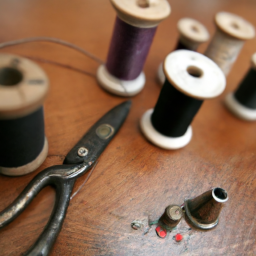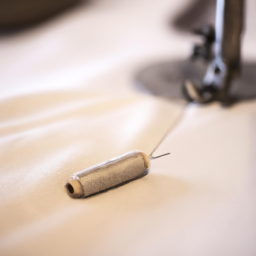
History of Hand Sewing Needles

Early Beginnings
The art of hand sewing dates back thousands of years, with evidence of its existence found in ancient civilizations such as Egypt, Greece, and Rome. The first known sewing needles were made of bone, ivory, or antler and served as essential tools for early humans.
These early needles were relatively large and crude compared to the finely crafted needles we have today. They were primarily used for sewing animal hides, creating clothing, and making baskets and other objects.
Advancements in Design
Over time, the design and manufacturing of hand sewing needles improved significantly. In the 14th century, needles began being made from iron and eventually steel, making them sharper, thinner, and more durable. This innovation allowed for greater precision in stitching and expanded the range of materials that could be sewn together.
During the Industrial Revolution in the 18th and 19th centuries, the production of sewing needles increased dramatically with the introduction of mechanized manufacturing techniques. This led to the mass production of needles, making them more affordable and accessible to people worldwide.
Specialized Needles
As sewing techniques diversified, specialized needles were developed to cater to specific tasks. Embroidery needles, for instance, have larger eyes to accommodate thicker embroidery threads, while beading needles are extremely thin and long to allow for easy threading through small beads.
Other specialized needles include quilting needles with short, thin bodies, leather needles with cutting points for sewing through leather, and tapestry needles used in needlepoint and cross-stitching.
“The invention of the sewing needle was a milestone in human history, revolutionizing the way we create and mend textiles.”
Present and Future
Today, hand sewing needles are typically made from high-quality stainless steel, ensuring their durability and resistance to rust. They come in various sizes and styles to address different sewing requirements.
While mechanical sewing machines and other modern sewing tools have gained popularity, hand sewing remains an indispensable skill cherished by both professionals and hobbyists. The needle, a seemingly simple tool, continues to play an essential role in garment construction, textile arts, and creative expression.
Whether you are a seasoned seamstress or just beginning to explore the world of sewing, understanding the origins of hand sewing needles allows for a deeper appreciation of this humble instrument’s tremendous impact throughout human history.
Sources:
- Smithsonian National Museum of American History – “The History of the Sewing Needle”
- Victoria and Albert Museum – “A Brief History of Needles and Pins”
- Textile School – “Sewing Needle: Types, Classification, and Uses”




